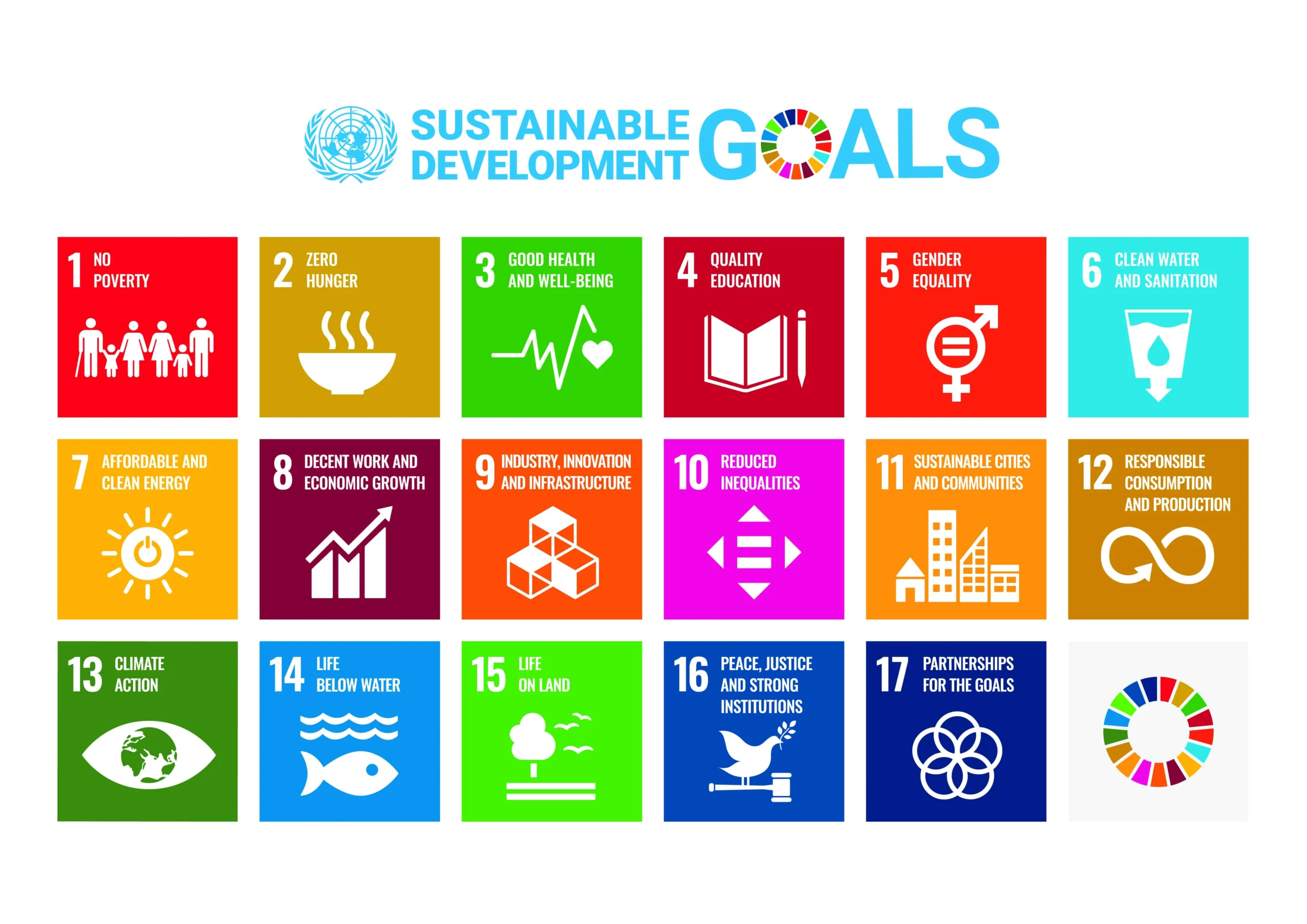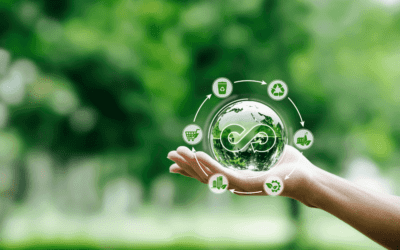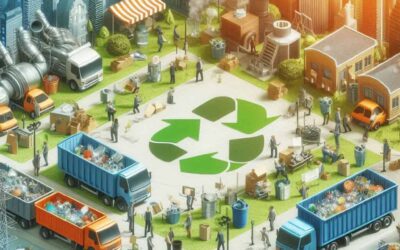Expert prediction: waste recycling and the circular economy
Now that we are hitting the middle of the 2020s, how are we doing on the waste management and recycling front? Are we doing all we can to help and ensure businesses and individuals think more carefully about waste? Do we have the commitments, processes, and technologies in place to support an efficient transition to a circular economy? What’s being done – and what’s missing?
In this article, we look at high-level thinking and progress and set out our own top 5 thoughts on what’s needed in the next 3-5 years.
1. Responsible consumption and production
There are 17 Sustainable Development Goals (SDG), defined by the United Nations, https://sdgs.un.org/goals

Paragraph 28 of the 2030 Agenda is specific to SDG12 and reads:
“We [Countries] commit to making fundamental changes in the way that our societies produce and consume goods and services. Governments, international organizations, the business sector and other non-state actors and individuals must contribute to changing unsustainable consumption and production patterns, including through the mobilization, from all sources, of financial and technical assistance to strengthen developing countries’ scientific, technological and innovative capacities to move towards more sustainable patterns of consumption and production. We encourage the implementation of the 10-Year Framework of Programmes on Sustainable Consumption and Production. All countries take action, with developed countries taking the lead, taking into account the development and capabilities of developing countries”.
Responsible production includes the introduction of Extended Producer Responsibility (EPR), where manufacturers and producers have a responsibility to look at the entire life cycle of a product, from raw materials used to what happens at end of life.
In some places, this is heavily legislated, and in others, its more like ‘guidance’. We know that most businesses will only make the effort to change their practices when they are under scrutiny – from customers, legislators, shareholders, or all three – and so the more these businesses are encouraged to take a more ethical and climate-driven approach, the more likely we are to have better products entering the market.
At the same time, consumers need to understand what they are buying and the impact it has on the planet. Of course, many people are already making a considerable effort – taking reusable bags to the supermarket, choosing less plastic, buying from refill stores, and checking packaging for recycling. There’s still much more to do, of course, such as choosing to repair larger items rather than replacing them, not switching equipment if we don’t have to or using the bus or bike more than the car.
Behavioural change experts tell us that if we want people to change their habits, we need to make it as easy as possible for them to do so. That means giving people all the information they need to make the right decisions and having the resources and infrastructure available to help them maintain those choices in the long term.
2. Earth Overshoot Day – What impact does this have?
Every year, we mark Earth Overshoot Day. According to the organisers, this “… marks the date when humanity’s demand for ecological resources and services in a given year exceeds what Earth can regenerate in that year.” In 1970, it was December 30th when this occurred – just a day earlier than the end of the year. In 2023, it was August 2nd.
The more we do to buy less, recycle more and make active changes to the way we run our lives. We must all work hard to ensure this date moves back to the end of the year.. The Earth Overshoot Day website says: “Given the massive overuse of the planet’s biological resources, our economies now are limited by the availability of Earth’s biocapacity. To ensure we have a healthy planet that can support us now, and in the future, requires reducing human demand and maintaining our planet’s life-support system.”
What does this mean in practice? It means we need to accelerate the move to a circular economy. Companies that adopt a circular system are more likely to succeed in the future, because they will have adopted, tested and refined the systems and processes that will allow them to operate when natural resources become severely depleted. They will reduce the resource=dependency of their local and national economies, and have a measurable impact on the way we treat our planet.
3. Boosting the circular economy
According to the Ellen MacArthur Foundation – a significant campaigning and education foundation – there are three key principles that make up the circular economy:
- Elimination of waste and pollution
- Circulation of products and materials
- Regeneration of nature
This model can be applied to organisations of all sizes, and for individuals too. It is regenerative by design – all processes are developed with these principles in mind. An example of this in practice is in Chile, where the government has looked at how it can transform the way its economy works to take advantage of the opportunities available.
“The transition from the end-of-life concept to a circular economy means a paradigm shift, and requires a huge transformation in our ways of producing and also consuming. That is why we decided to lead the construction of a road map, inviting a cross-sector group of organisations to help us define concrete goals and objectives to make Chile a circular country.” Carolina Schmidt, Former Minister for the Environment (2018-2021), Chile
There are certainly costs involved in this type of transition – for a single individual or a multi-national corporation. Successful change only happens with the proper investment. For example, manufacturers must look at everything from the materials they use, to what happens at end of life. How can they give their products a longer life? How can they use recycled materials to achieve the same performance? How can they use local resources to limit transportation?
A considerable investment of time and money, then – but with significant long-term benefits. Reduced greenhouse gas emissions, cleaner water, reducing landfill, contributing to a healthier planet. There are also commercial benefits – increased appeal to customers, less money spent on raw materials, lower transportation costs and, depending on governments, perhaps even lower taxation commitments.
4. Better Waste Management Practices – Are current goals helping?
There’s always room for improvement, and as predictions for our climate and planet’s health are continually revised, so we should be constantly looking at our goals and whether they are relevant.
In the UK, for example, the government uses the Waste Hierarchy model. This has been extremely useful – indeed, we use it ourselves. However, we also recognise that ‘dealing’ with waste isn’t enough – we have to move closer to preventing waste from occurring in the first place. And we have to do that faster than we originally thought, because we can see for ourselves the impact that the climate emergency is having around the world.
Of course, waste isn’t the only contributing factor to this emergency. But it does carry a lot of weight, and reducing or eliminating it would make a big difference. In fact, the Institute of Mechanical Engineers published a report in 2009 called Waste as a Resource: A Sustainable Way Forward. In 2022, it updated this report with some important recommendations, including making more effort to treat waste as a commercial resource. Key updates include:
- Replace the current Waste Hierarchy with a model that genuinely delivers on the prevention of waste. Preventing waste delivers by far the most benefit for the environment.
- Release the value of our resources. Look for solutions across all waste streams that prioritise the contribution of the waste to different areas – for example as reusable materials, or as materials that can be repurposed for energy production.
- Adopt a Zero-to-landfill approach. This is easier to measure than a standard zero waste target and allows companies to manage their waste streams more effectively.
- A greater emphasis on all waste streams. Much of the work done in this area is on household waste, and waste from general commercial organisations. IMechE wants the government to spend more time looking at those industries that actually generate the most waste – including construction, demolition and excavation.
- Use locally-produced waste to heat and power local communities. Keeping things local is often more engaging for consumers, reduces transportation and giving communities ownership of their waste production and energy use.
Alongside a reframing of waste as a resource in the UK, a White Paper produced for the European Union suggests a reframing of the Waste Framework Directive, which has guided the EU’s policy for nearly 50 years. This revision is to support the transition into a Resources Framework Directive, which would be focused on reducing resource consumption and using materials more efficiently to reduce raw material use. The aim would be to encourage EU countries to build a sustainable circular economy model by 2040.
5. How technology will support better Waste Management Practices
None of these shifts in approach can happen without technology. Companies who are completely reframing their processes will need to collect, understand and process the data that helps them to see where and how to make the changes they need. They will have to introduce technology to improve efficiency and replace older systems with newer ones.
For those managing waste and recycling, technology is fundamental to success. For waste to be properly collected – particularly in areas that operate a Pay as You Throw scheme – the technology needs to be available for correctly tagging, weighing, sorting and processing various types of waste. And, of course, it will be used to manage the logistics of collections, the management of secondary material streams and ensuring compliance with local and national legislation.
For companies in this sector, there are six drivers for digitalisation, according to the European Environment Agency:
- Customer expectations
- Increasing waste amounts
- Cost pressures
- Climate crisis
- Urbanisation
- Business models
For consumers, technology will be an essential part of behaviour change. Householders will want to know that they are being fairly charged for their waste, and that they can track their waste in the future. They will also need technology that is almost invisible to use, so that it becomes part of their everyday lives, rather than something to worry about.
And, of course, as we move into a digitally-enabled circular economy, all our processes will need to be monitored, introducing continual improvement to make sure we are always making the best efforts in the most efficient way – helping everyone to reduce waste, use it effectively as a resource where it does exist and have a positive impact on the planet.
To find out more, contact our team today or visit our showcase below.






